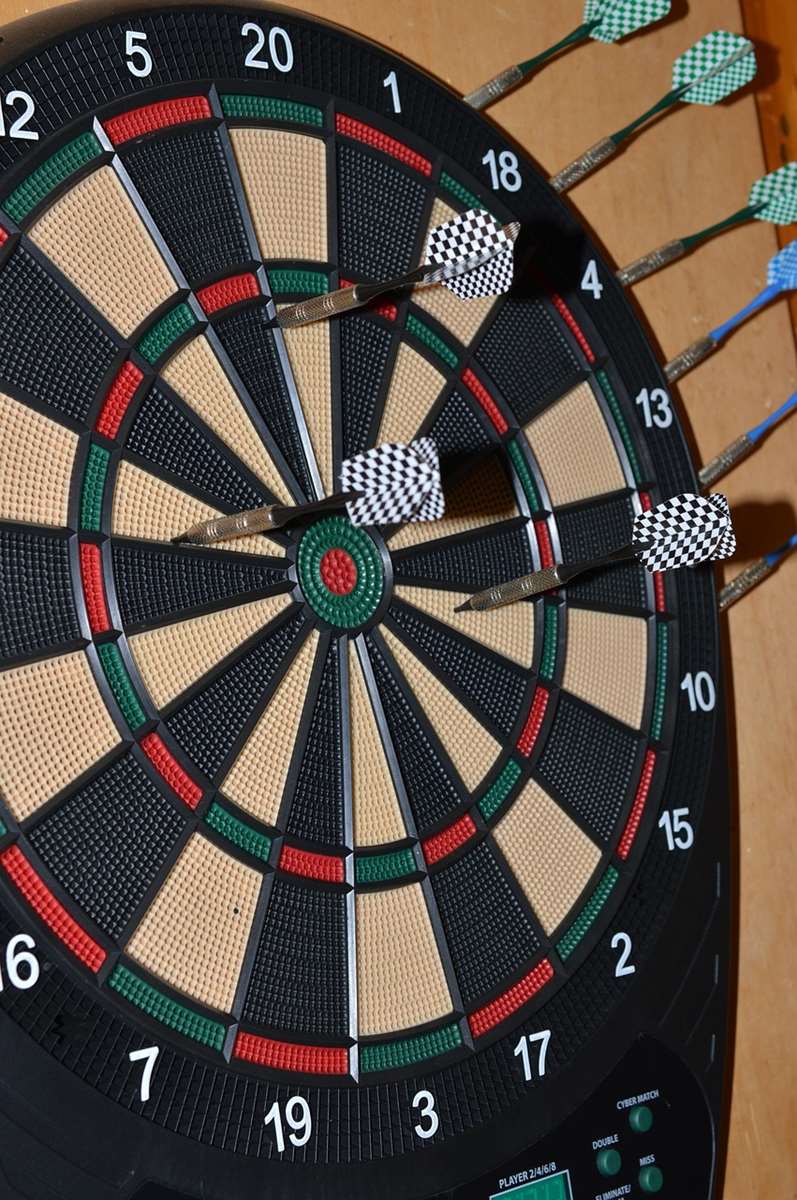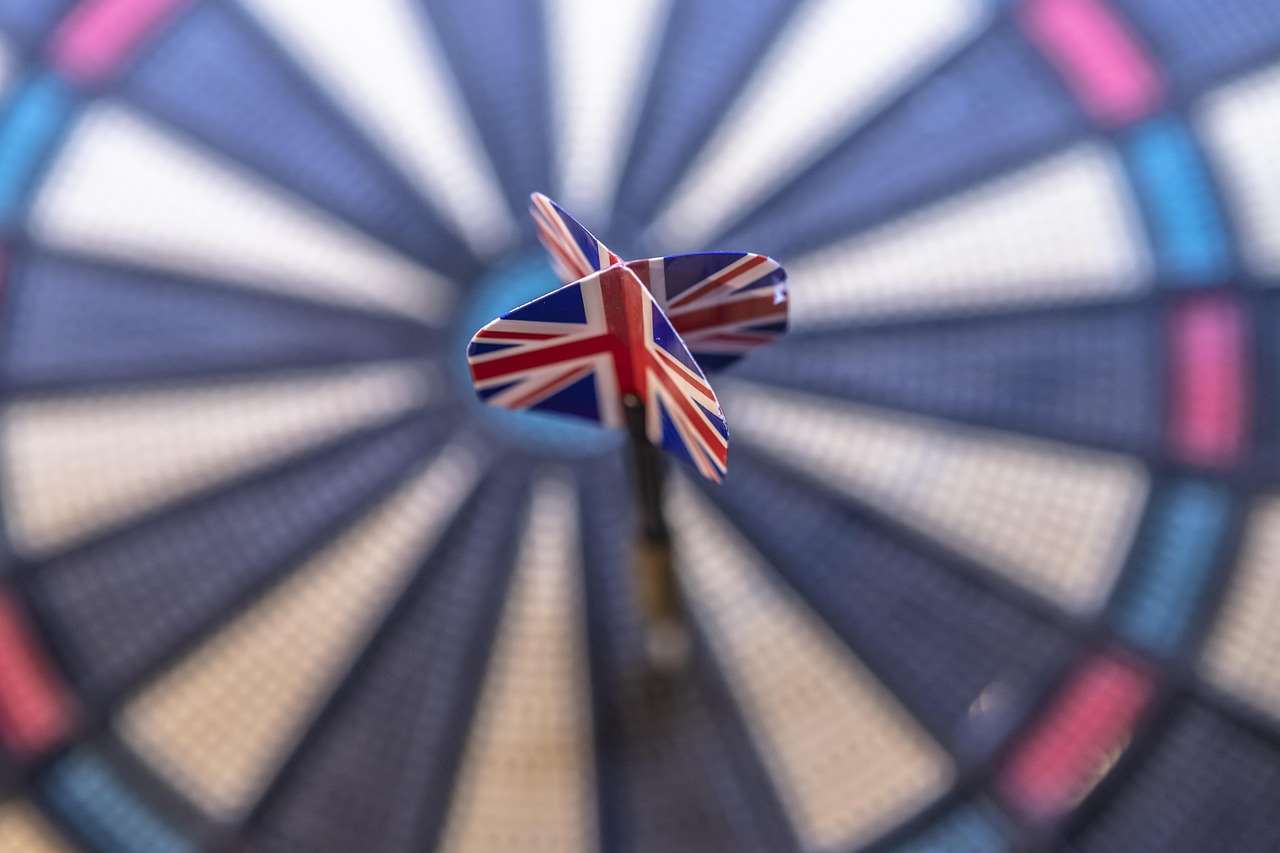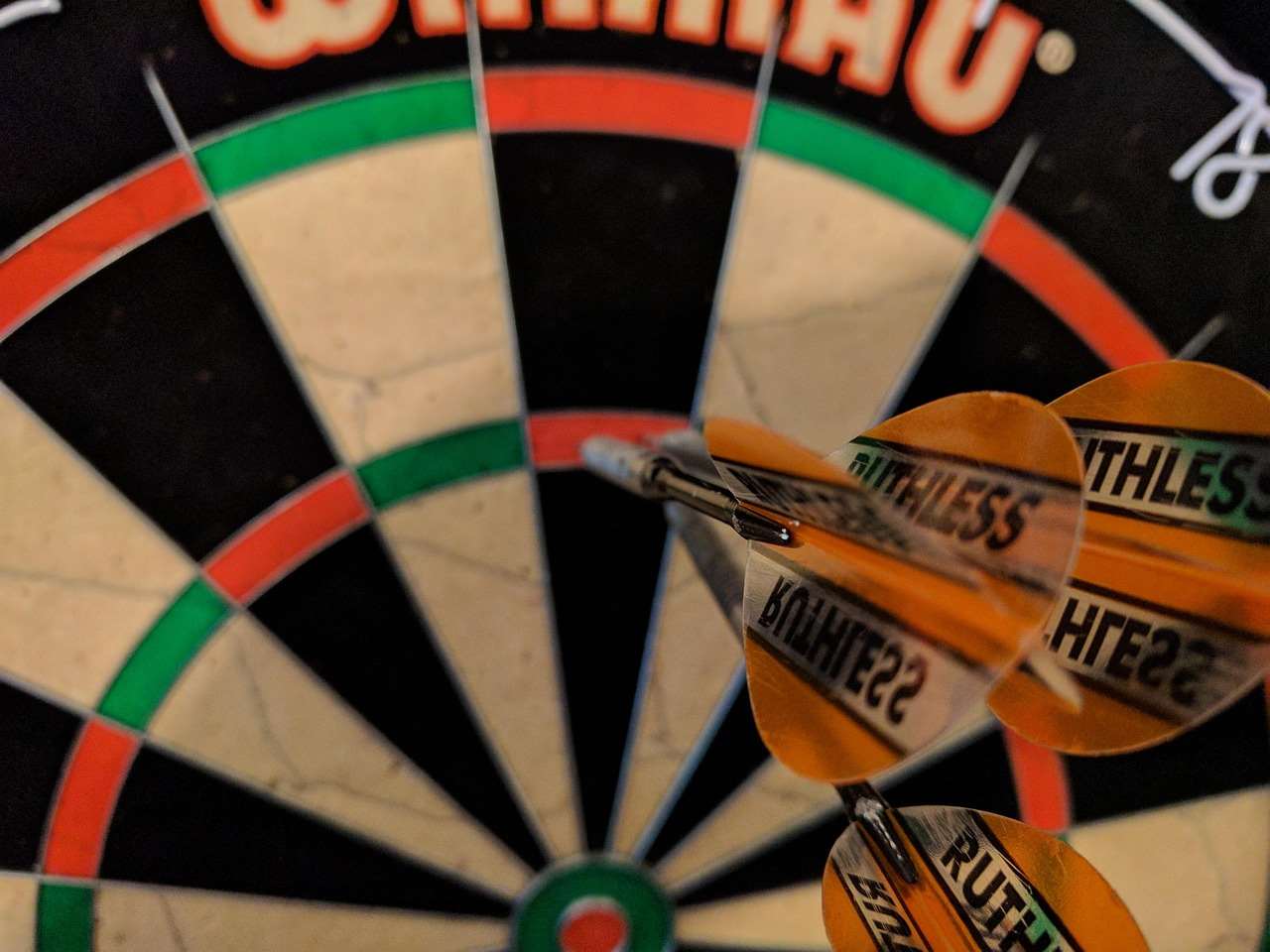Understanding doubles darts rules is crucial for playing many popular dart games, as they often dictate how you start, finish, or even score during a match. This article will provide a comprehensive overview of these rules, covering variations across different games, common strategies, and tips for improving your doubles accuracy.
⚠️ Still Using Pen & Paper (or a Chalkboard)?! ⚠️
Step into the future! The Dart Counter App handles all the scoring, suggests checkouts, and tracks your stats automatically. It's easier than you think!
Try the Smart Dart Counter App FREE!Ready for an upgrade? Click above!
Understanding the Basics of Doubles Darts Rules
In the world of darts, the term “doubles” refers to the narrow outer ring on the dartboard. Hitting a dart in this ring scores double the value of that section. For example, hitting the double 20 scores 40 points, and hitting the double 1 scores 2 points. But knowing how to hit a double isn’t the only part of the doubles darts rules; understanding when and why you need to hit a double is critical.

The importance of hitting doubles arises mainly in games like 501 and 301, where the game must be ended by hitting a double (or sometimes the bullseye, which counts as double 25). This adds a layer of strategy and pressure to the game, as players must carefully plan their final few darts to leave themselves with a reachable double. Knowing your oche distance can also make a big difference in your throws.
Doubles Darts Rules in Common Games
501 and 301
These are perhaps the most common dart games where doubles darts rules are paramount. The objective is to reduce your score from 501 (or 301) to exactly zero. However, the final dart must land in a double or the bullseye. If you score below zero, or finish with one point, the throw is invalid, and your score reverts to what it was at the start of that turn. This is often referred to as “going bust.”
Here’s an example: If you have a score of 32 left, you could aim for the double 16. If you hit it, you win the game. If you miss, you need to reassess your strategy. A common strategy is to leave yourself with a double that you are comfortable hitting. For example, many players prefer to leave themselves with double 20 (40), double 16 (32), or double 10 (20).
Around the World
In this game, players must hit each number on the board sequentially, from 1 to 20. Variations exist where players must hit each number in the double or treble ring. If playing a “doubles around the world” variation, the doubles darts rules mean you must hit the double segment of each number in order. This game is excellent for practicing your accuracy and consistency, particularly when targeting the double ring.
Cricket
While cricket is primarily about scoring points on specific numbers (20, 19, 18, 17, 16, 15, and the bullseye), hitting doubles can still be strategically valuable. While closing out a number only requires three marks (hitting the single counts as one mark, the double counts as two, and the treble as three), hitting a double can quickly advance your progress. For instance, hitting a double 20 gives you two marks towards closing out that number.

Strategies for Improving Your Doubles Accuracy
Mastering doubles darts rules and applying them effectively requires practice and the right strategy. Here are some tips to improve your accuracy when aiming for the doubles:
- Consistent Stance and Grip: Maintain a consistent stance and grip each time you throw. This helps develop muscle memory and improves your overall accuracy.
- Target Fixation: Focus intently on the double you are aiming for. Visualize the dart hitting the target before you release it.
- Smooth Release: A smooth, controlled release is crucial. Avoid jerking or snapping your wrist, as this can throw off your aim.
- Practice, Practice, Practice: Dedicate time to practicing doubles specifically. Use drills like throwing at the same double repeatedly to build consistency.
- Mental Game: Stay calm and focused, especially under pressure. Avoid letting nerves affect your throwing technique.
Common Mistakes to Avoid When Aiming for Doubles
Even experienced dart players can sometimes struggle with doubles. Here are some common mistakes to avoid:
- Overthinking: Don’t overthink your throw. Trust your practice and let your muscle memory take over.
- Changing Your Technique: Avoid making drastic changes to your technique, especially during a game. Stick to what you know works.
- Ignoring Your Equipment: Ensure your darts are properly maintained. Worn flights or bent shafts can affect your accuracy. Consider trying a darts flight bundle.
- Lack of Focus: Maintain focus throughout the game, even when you are not throwing. Distractions can lead to poor performance.
- Neglecting Warm-up: Always warm up before playing. A few minutes of practice can help you get your eye in and improve your accuracy.

Choosing the Right Doubles to Target
Not all doubles are created equal. Some are statistically easier to hit than others. Factors like board wear, personal preference, and the specific score you need to leave can influence your choice. For example, double 20 is a large target, and many players prefer to leave it as their finishing double. However, double 16 is also a popular choice, especially when needing to leave a specific score like 32.
Consider these factors when choosing which double to target:
- Target Size: Larger doubles, like double 20 and double 16, offer a bigger margin for error.
- Board Condition: Check for wear and tear on the dartboard. Some doubles may be easier or harder to hit depending on the condition of the board.
- Personal Preference: Choose doubles that you feel comfortable throwing at. Practice with different doubles to find your strengths.
- Score Requirements: Consider the score you need to leave. Sometimes, a less common double might be the best option to set up your finish.
Practicing Doubles Darts Rules with Different Games
While 501 and 301 are the most common games for practicing doubles, there are other variations and training exercises that can help improve your accuracy and strategy:
- Doubles Only 501: Play a game of 501 where you can only score by hitting doubles. This forces you to focus on hitting the double ring and improves your consistency.
- Around the Clock Doubles: Start at the double 1 and work your way around the board, hitting each double in sequence. This is a great way to practice your accuracy on all the doubles.
- High Score Doubles: Aim for the highest possible score by hitting doubles. This helps you develop your aiming skills and improves your ability to score quickly.

Incorporating these games and exercises into your practice routine can make it more enjoyable and help you develop a well-rounded skillset. Remember to track your progress and identify areas where you need to improve.
The Psychological Aspect of Hitting Doubles
Doubles darts rules often involve a significant psychological element, particularly when closing out a game. The pressure of needing to hit that final double can be intense, and managing your nerves is crucial. Here are some tips for dealing with the psychological pressure of hitting doubles:
- Visualization: Before throwing, visualize the dart hitting the target. This can help you stay calm and focused.
- Deep Breathing: Take a few deep breaths to calm your nerves. This can help you relax and improve your accuracy.
- Positive Self-Talk: Remind yourself that you are capable of hitting the double. Positive self-talk can boost your confidence.
- Ignore Distractions: Focus on your target and ignore any distractions. This can help you stay in the moment and avoid mistakes.
- Accept Mistakes: Don’t get discouraged if you miss. Everyone makes mistakes. Learn from them and move on.
Advanced Doubles Strategies and Tips
For more experienced players, there are several advanced strategies and tips that can further improve their doubles game:
- Out Chart Planning: Develop a plan for how you will finish the game. Know which doubles you are comfortable hitting and plan your throws accordingly. Many players can use a Darts scorekeeper app to help them with this.
- Opponent Analysis: Pay attention to your opponent’s strengths and weaknesses. This can help you make strategic decisions about which doubles to target.
- Board Management: Control the board by strategically targeting specific numbers. This can help you set up your finish and prevent your opponent from scoring.
- Vary Your Pace: Vary your pace of play to disrupt your opponent’s rhythm. This can help you gain a psychological advantage.
- Practice Under Pressure: Simulate game situations in practice to prepare yourself for the pressure of competition.

Conclusion
Understanding and mastering doubles darts rules is essential for success in many dart games. By focusing on consistent technique, strategic target selection, and mental fortitude, you can significantly improve your accuracy and overall performance. Remember to practice regularly, analyze your performance, and adapt your strategies as needed. With dedication and the right approach, you can become a proficient doubles hitter and elevate your dart game to the next level. Now, grab your darts and start practicing your doubles to improve your overall game. Consider exploring different dartboard setups like a dartboard on back of door to enhance your practice environment.
Hi, I’m Dieter, and I created Dartcounter (Dartcounterapp.com). My motivation wasn’t being a darts expert – quite the opposite! When I first started playing, I loved the game but found keeping accurate scores and tracking stats difficult and distracting.
I figured I couldn’t be the only one struggling with this. So, I decided to build a solution: an easy-to-use application that everyone, no matter their experience level, could use to manage scoring effortlessly.
My goal for Dartcounter was simple: let the app handle the numbers – the scoring, the averages, the stats, even checkout suggestions – so players could focus purely on their throw and enjoying the game. It began as a way to solve my own beginner’s problem, and I’m thrilled it has grown into a helpful tool for the wider darts community.